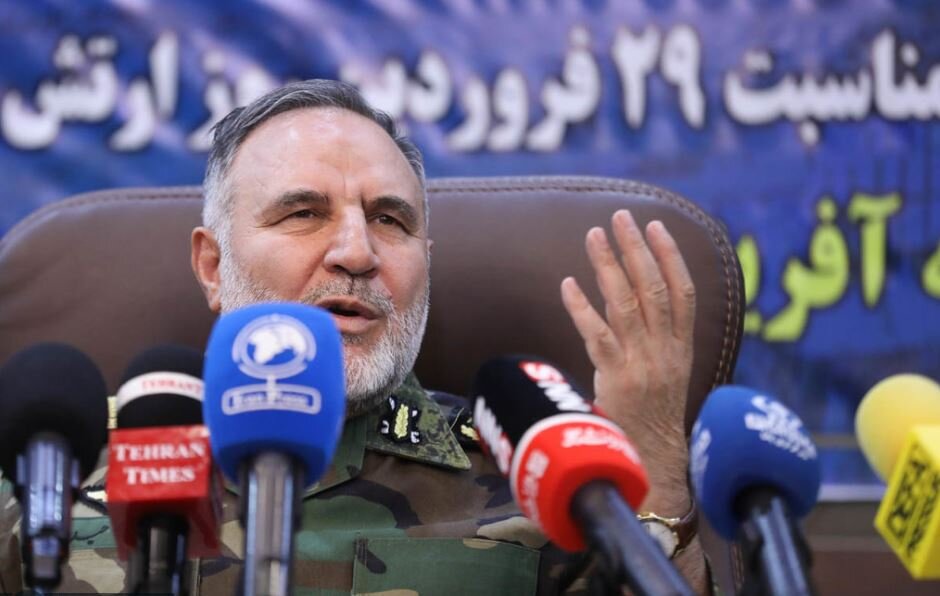TEHRAN – Brigadier General Kiumars Haidari, commander of the Iranian Army’s ground forces, announced a comprehensive update on the Army’s modernization efforts and defensive stance at a press conference on Sunday, describing the “transformation of the Force into mobile, offensive and rapid response.”
“There are no more traces of old, fixed units,” Haidali said, highlighting extensive structural reforms aimed at increasing operational agility and deterrence. Ground forces can rapidly deploy to major strategic regions, including the west, southwest and northeast, to neutralize new threats, according to the commander. “We have achieved a level of deterrence that prevents the enemy from even considering aggression,” he added.
The commander outlined four important characteristics of the Army’s new generation weapons. Long range accuracy, smart and AI-enabled features, complete network integration, and operational interoperability.
“All our modern weapons are developed or produced domestically in collaboration with the Ministry of Defense,” he said, emphasizing independence. “This cleverly connected Arsenal allows us to act decisively across the land, the air and the ocean.”
Haidari highlighted its role as a major growth area for artificial intelligence and drone technology. “We have worked with local scientists and tech companies to seriously invest in AI, especially UAVs and anti-drone systems,” he said.
Beyond the battle, the Army Ground Forces also provide a wide range of humanitarian and civil servants. Haidari pointed to five complete operational engineering units that can be deployed nationwide, particularly during natural disasters. “These units were the first to respond during past earthquakes, played a key role during the war, losing 171 engineers in minefield operations,” he said.
He also highlighted the Army’s medical capabilities. “We operate 28 hospitals and five new facilities have been added in recent years. During Covid-19, we mobilized 12,000 staff and built eight hospitals.”
Haidari marked the new military day by unveiling a national parade spanning 24 states on April 18th. “These next generation weapons will play a key role in the battlefield of the future,” he said, inviting the public to attend.
Regarding missile preparations, Haidari said the ground forces will now be on the ground with long-range precision guidance systems suitable for the Army’s operational scale and cutting-edge anti-armor weapons with “fire and forgotten” technology.
Regarding border security, he outlined a four-year plan to secure Iran’s eastern border with Afghanistan, using a combination of physical barriers and integrated surveillance systems. “Year 1 is complete. It will be completed within three years.”
Haidari also highlighted expanding military cooperation with neighboring states. “We conducted joint drills with Azerbaijan and Oman last year. He said that we have made progress in upgrading Army helicopters with domestic night systems and long-range missiles, as well as increasing domestic helicopter production.
In conclusion, Haidari reaffirmed his army’s loyalty to the leaders of the Islamic Revolution and his mission to defend the Islamic Republic. “We don’t try to invade or violate others, but failures by the enemy are filled with accurate, intelligent and decisive responses.”

